Mirror, Mirror on the Wall, Why Must You Be So Cruel to All?
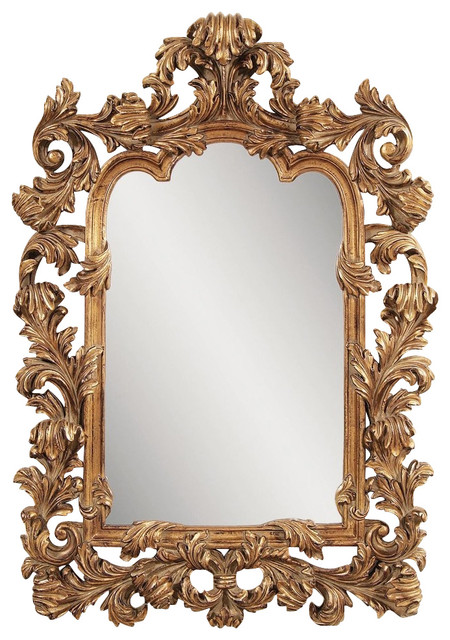
A mirror provides a reflection of a person’s exterior representation, but cannot be relied upon as a contingent construct of identity. Sylvia Plath unceasingly revisits to the trope of mirrors to amalgamate the represented self with the true self in both her prose and her poetry. In The Bell Jar (1963) Esther Greenwood is in the hospital, pleading with a nurse to let her see a mirror. Once Esther views her reflection she exhibits a state of satisfaction after glaring at her face, smiling, and thinking “The most startling thing about the face was the supernatural conglomeration of bright colors” (174).“The mouth in the mirror cracked into a grin” describes the image as separate from the person—Esther (175). She finds solace in viewing her outward appearance coinciding with her inward view of her true self as flawed, disjointed, and fragmented. Plath continues to discuss this trope in her poem “Mirror,” (1961). The tone of the poem shifts from declarative to somber. The speaker’s struggle to formulate a union between the perceived self and the true self leads to moments of frustration and rage. The emotion of confliction experienced while endeavoring to formulate a unified self is also highlighted in the poetry of Richard Siken. The task of reconciling the reflected self with the individual self is most apparent in the poem “Unfinished Duet,” when the speaker is glaring in a mirror and looking at “a traitor,” a “naked hostage,” expressing sheer loathing and paradoxical thoughts (26, 27). Plath and Siken frantically pursue a representation analogous with the inner self, while experiencing feelings of fragmentation when exposed to the incompatible image reflected in the mirror.
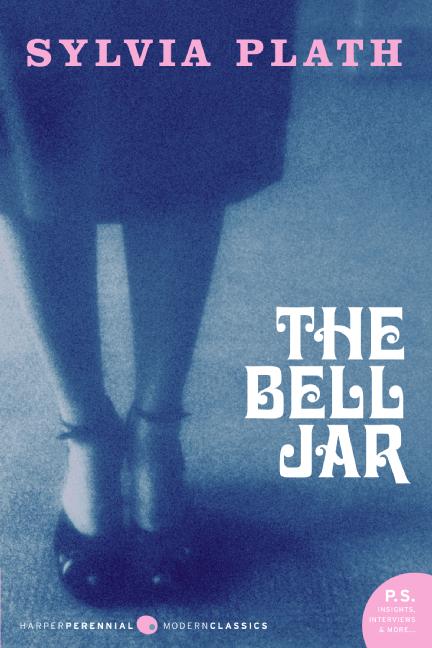
Scholar Steven Gould Axelrod has written extensively on Plath, and helps situate Plath’s interest in the symbolic representation of mirrors, likely first explored in her Senior Thesis at Smith College, titled, “The Magic Mirror: A Study of the Double in Two of Dostoevski’s Novels,” (1955) (Axelrod 287). A mirror does not simply reflect an image of an object, but a reversed projection of the image. This reversal of a represented image is the basis of the relationship between mirrors and the uncanny. What is perceived is a superficial representation, but the accuracy can be contested due to it merely consisting of an optical illusion. The reflection gazing back is a simulated image due to the interaction of light energy and the composition of the glass surface it refracts from. Therefore, to equate mirrors with the idea of the double is in fact quite accurate. While there are numerous meanings and associations attributed to the idea of the double, psychoanalyst Otto Rank described the double as indicative of the “almost pathological loss of one’s real self through the superimposed other” (Axelrod 288). Steven Axelrod explores the double to explicate Plath’s use of mirrors in her poems. He arrives at the conclusion that the poems that focus on mirrors are an attempt to dramatize the struggle that ensues within the self, in the figuration of a composite whole (Axelrod 295). Axelrod surmises that it was Plath’s fractured self-confidence that led to a compulsive interest in transcending her fragmented identity into a cohesive, recognizable representation of the self.
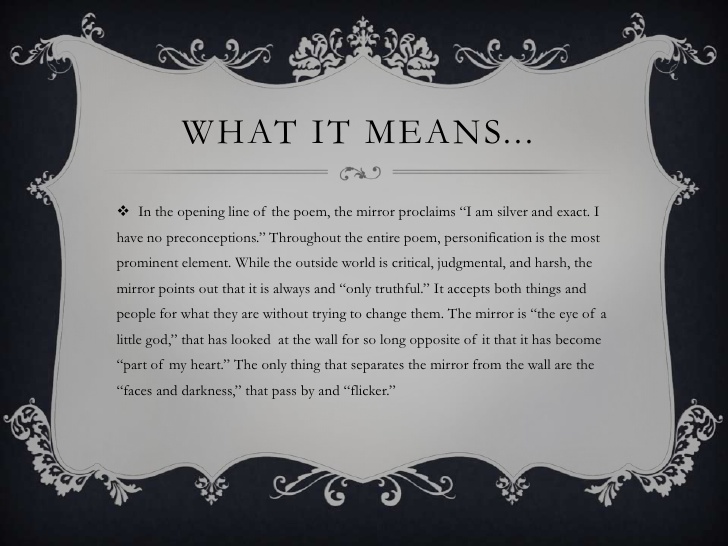
W.J.T. Mitchell is a scholar in the field of iconology and probes the topic of the relationship between an object and the way in which it corresponds with its representation. This manner of inquiry enhances an understanding regarding Plath and Siken’s renditions of object in representation through literary form. In the poems, the speaker takes the form of the object, and the reflection of the image in the mirror is the representation. Mitchell describes the intricacies of representation as such: “One way to think of it is as a triangular relationship: representation is always of something or someone, by something or someone, to someone” (12). Yet, much like Plato’s concern with the idea of mimesis (defined by Plato as an imitation of the original; very commonly discussed in aesthetics and literature), the representation can be inconsistent with the object. Regarding the works of Plath and Siken, the reason for the discrepancy would be due the receiver of the representation forming a biased opinion due to a skewered understanding of self. Mitchell states that one of the main problems with representation is the barrier to understanding and the possibility of miscommunication and erroneous judgments (12). This leads to a crucial point pertaining to the problematic relationship between object and representation. The difficulty in cultivating a truthful rendition of self is influenced by an inherent hindrance when, “representation begins to play a double role, as a means of communication which is also a potential obstacle to it” (12-13).
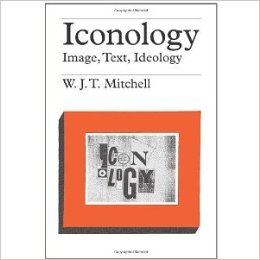
The obstacle Mitchell refers to is further complicated once the representation, “takes on a life of their own that escapes and defies the will to determine their meaning” (20). Sylvia Plath’s poem “Mirror” exemplifies this notion especially due to the personification of the mirror. At first, the mirror is subtly describing its characteristics: “I am silver and exact. I have no preconceptions” (1). Leading to the mistaken notion that, maybe Sylvia is really just discussing a mirror? The second line immediately breaks the spell of literal description once the mirror states, “Whatever I see I swallow immediately/ Just as it is, unmisted by love or dislike” (2-3). The mirror is describing the way an image will be received and is done so in an unforgiving manner; emotion is revoked from the representation and brings the focus back on the mirror as an inanimate object. “Swallow” is an interesting choice of diction as it is a primary physiological task of the nervous system; yet, the implication here is not an act of digestion, but one of taking hold of the image and never allowing for the image to alter, change, or perfect the reflection. “Unmisted” dispels the affect of emotions distorting the image in a favorable or unfavorable way since the mirror is being referred to as a beacon of truth telling, as stated in the proceeding line. “The eye of a little god, four-cornered” is a complicated line of verse. The “eye” is likely a play on sound—a homophone—of “I,” while also conveying a double meaning of the construction of identity through the visual representation provided to the “I,” as well as the cognitive conception of the mind of the “eye” in formulating an identity. The object—the individual staring in a mirror—is a two-dimensional object; whereas the reflection that reaches the eye of the viewer/object, is a three-dimensional object. On a geometric, as well as a sensory depth perception basis, the object cannot match the reflected image, further distorting the ability of a receiver—especially one dually acting as the object—to expound a composite whole.
The duality that occurs when an object is also the perceiver is the basis of Susan E. Schwartz journal article, “Sylvia Plath: A Split in the Mirror,” which explicitly focuses on the nature of the psyche in joining the personal and collective self (64). Schwartz explored Plath’s prose, poetry, and journals to understand the numerous mentions of duality and fragmented identity in her literary works. In formulating an understanding of Plath, Schwartz uses the term, “split selves” as well as the imagery of a mask (68).
Her poems essentially show the pressure of an unbearable coexistence
of opposites and themes in the terrible insecurity of the self, the reality
of indifference, lovelessness…They present images of self-loss, an
alienation brining about extreme self-involvement, the self not as
emergent but fragmented, dissipated, obsolescent with many different
masks and positions. (Schwartz 68)
Plath’s poem “Mirror” was of immense interest to Schwartz, as she viewed it as the “encapsulation of the true self” (70). She saw it as a metaphor of Plath’s inability to conceptualize an idealized self in a world that demanded specific expectations from females. The pressure to consolidate what Plath saw, and what Plath revealed, exalted a level of haunting that led her to feeling tormented. “Not liking the self it sees, the mind projects a false self that serves to protect the true self from being seen” (Schwartz 70). This concept is best referred to as a defense mechanism, which aids the psyche in thwarting off neurosis.

Schwartz’s explication of Plath’s difficulty bearing the truth-telling nature of the mirror alludes to the poem by Emily Dickinson: “Tell all the Truth but Tell it Slant” (1263). Though Dickinson is alluding to the auditory function of truth telling, the basis of the poem coincides with the visual representation of truth in Plath’s “Mirror” poem. “The Truth must dazzle gradually/ Or every man be blind—(7-8) utilizes the metaphor of visual perception, as well as the theme of emotional pain delivered by the blunt force of reality. Dickinson compares the necessity to slowly let the truth unravel to the way an adult explains a scary concept to a child. If all of the specifics are provided to the child at once, he or she will become overwhelmed, horrified, and scared. Resulting in a failed attempt to provide a truthful representation of life, only to be flawed by the child’s emotional faculties that interfere with the transmission of thought—“Success in circuit lies” (2). Plath’s unresolved childhood struggles, and the inability to successfully compose an adequate sense of identity places her in the position of the speaker who is blinded by the truthfulness of the mirror. Yet, the truth, as observed in her eyes, is not an accurate indicator of her image; due to her flawed amalgamation of the self and the exterior representation, she is forever stagnant in a pivotal stage of emotional development. Aside from an inability to conform to the expectations of an idealized self, Plath was unable to capture any form of self, regardless of how many attempts were made, thus leading to the constant topic of mirrors and the reflection revealed from the truth-telling looking glass.
In 1887, Lewis Carroll continued the adventures of a young Alice in the sequel, Through the Looking Glass. Though the story is designed for children, there is a pivotal moment in the action of the book when Alice cannot grasp a sense of identity:
She stood silent for a minute, thinking: then she suddenly
began again. “Then it really has happened, after all! And
now, who am I? I will remember, if I can! I’m determined
to do it!” But being determined didn’t help her much, and
all she could say, after a great deal of puzzling, was, “L, I
know it begins with L!” (Carroll 185)
Once Alice is in an alternate landscape of reality, her conceptualized self becomes so blurred that she is unable to remember her name; her only clue to grasping a sense of her identity is through a reliance on the phonetics of her name in which the letter “L” resonates most prominently. Carroll’s story, involving talking flowers, animated playing cards, and unicorns, transgresses to a serious topic once Alice’s encounters the looking-glass insects (Chapter III) in which she sees her reflection; yet she cannot formulate or articulate a sense of self. Though this moment is fleeting, it is a reminder of how a cluttered mind can lead to an inability to reconcile the representation of a projected self with the conceived notion of identity. Psychoanalysts R.D. Laing explored the inability to reconcile a projected self with an embodied self in The Divided Self. Alice is surrounded in an unknown world, unable to receive any form of recognition of her individuality, which leads to a blurring of her identity. Laing defined this type of situation as “Engulfment,” which is described as: “a risk in being understood (thus grasped, comprehended) in being loved, or even simply in being seen” (44). Though Alice can see herself in the wings of the looking-glass insects, the image projected back is distorted, unrecognizable, and lacking the human interconnectivity necessary in understanding her identity. Though this moment of clarity is quickly digressed by the appearance of Tweedledum and Tweedledee, Carroll engages in a brief reflection on the aspect of human relations in understanding and formulating a sense of self.
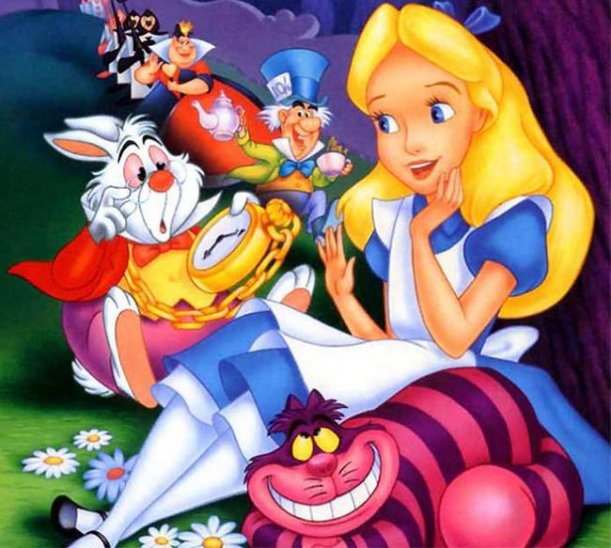
Carroll’s use of animals in his work adds to the playfulness, childlike tone of Alice’s Adventures; yet, the “terrible fish” in Plath’s poem “Mirrors” creates a dissimilar effect. The fish becomes a displaced, unwelcome object in the representation of the self. The Mirror has undergone a transformation into a lake; a depiction of fluidity, and the antithesis of the stagnant image reflected back in the glass mirror. “Now I am a lake. A woman bends over me, / Searching my reaches for what she really is,” marks an overt change in voice and tone (10-11). The speaker’s use of the ambiguous term “is” attests for her inability to attain any form of identity. This transition from a mirror to a lake represents the fleeting, unreliable dependence on seeking a representation of the self through a reflective surface. The stability of the stagnant mirror is now converted to a body of water, fluid, ever changing, and inhabiting other bodies of water—fragments of self.
Another significant component of the shift from a concrete mirror to a flowing lake is the aspect of temporality. “Most of the time I mediate on the opposite wall” is the voice of the personified mirror before it transitions to a lake (6). The lake becomes a constant site for a nameless woman, who depends on its reflective abilities in providing her with an image of her self. As the current changes, and the waters shift, time is cruel to the woman’s search for self, deceitfully rendered by candlelight that is prone to project shadow more than reflection. The illumination of the candles and the moon provide a devious rendition, with the projection of a distorted representation, which might be comforting to a person unable to locate any form of identity. The alterations to the image, and the shadows cast by the light of the candles and the moon, make the speaker feel more at peace, since it is analogous with the speaker’s fractured self. The mirror, and perhaps the lake, can be trusted; yet the emergence of the fish provides a stark reality and shatters an individual’s desired conception of self. This violent disruption, in a seemingly uneventful poem, touches on a pivotal concept discussed by Laing:
The body is felt more as one object among other objects in
The world than as the core of the individual’s own being.
instead of being the core of his true self, the body is felt
as the core of a false self, with a detached, disembodied,
‘inner,’ ‘true’ self looks on at with tenderness, amusement
or hatred. (69)
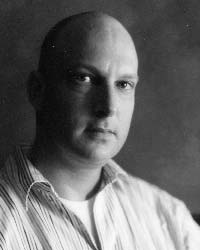 Richard Siken. Poet and author of Crush(2005)
Richard Siken. Poet and author of Crush(2005)
The “terrible fish” of Plath’s “Mirror” becomes ensnarled in Richard Siken’s “Unfinished Duet,” when “he” in the poem “stands in front of the mirror with a net, / hoping to catch something” (30-31). Does “he” catch the “terrible fish” plaguing Plath’s poem? To understand what the speaker is attempting to catch, the reader must once again reflect on the subject of the mirror as a symbol of expression. Whereas the tone of Plath’s poem is predominantly flat and ambiguous, Siken’s tone is filled with wrath and anger. The speaker begins a conversation with the reflected image he views in the mirror. This immediately calls to mind the idea of the double and the narcissistic tendencies unresolved in childhood that produces the reemergence of the double. Due to the level of disgust voiced, it is apparent that the reflection is one of disappointment. From this perspective, it can be surmised that the “he” is interacting with his double in producing a conversation regarding identity and the individual’s failure to produce a composite self that would expel the emergence of the double. In William Freedman’s journal article, “Sylvia Plath’s ‘Mirror’ of Mirrors, the author cites Dan Jacobson’s article, “Mirrors Can Kill” as a source of insight into understanding the confliction faced. Jacobson states that mirrors are “images of the mind’s ensnarement in itself. ‘Now of what does a mirror make us think immediately?’ he asks. ‘Surely of the self reflected back upon itself. Of the self entrapped, unreal, unable to reach towards anything other than its own image” (Freedman 57). Jacobson’s quote speaks directly to Siken’s “Unfinished Duet,” and the inability to seize upon the reality of what is reflected back to the speaker.
“Unfinished Duet” explores numerous questions, such as: identity, reality versus illusion, and the speaker’s unrelenting anger at the persona staring back at him through the reflection in the mirror.
The face in the mirror is a little
traitor, the face in the mirror is a pale
and naked hostage and no one can tell
which room he’s being held in. He wants
in, he wants out, he wants the antidote.
He stands in front of the mirror with a net,
Hoping to catch something. (Siken, 26-31)
There are numerous identities floating about in these lines of verse: “traitor,” “pale and naked hostage,” and the indecisive “he.” The use of the word “traitor” could be indicative of the speaker expressing discontent with the problem of his exterior representation as contradictory to his internal true self. Yet, the word may be indicative of the double; what he sees is an illusory self that is constructed to suite societal norms while diverging from the idealized self. When the speaker describes the image as a “hostage” the topic of entrapment arises, as well as realization of the four cornered, enclosed space of a mirror. “Naked” refers to the inability to hide when in front of a mirror; exposure is inevitable, as there is no place to hide.
Whereas Plath’s speaker in “Mirror” moves from a mirror to a lake, and a sense of partial freedom resonates, the speaker in “Unfinished Duet” is caught in a static web of captivity. He grabs hold of a net “hoping to catch something” (31). The inability to articulate the “something” reiterates the inability of the speaker to understand exactly what he is attempting to capture. The lack of specificity communicates his ambivalence regarding the image he views; the resemblance is there, but it does not sufficiently alleviate his apprehension in relating reality to his identification of self. In The Divided Self, Laing described this anger and inability to understand the correspondence between the reflection and the self due to a “false-self system, or system of false selves” (73).
The unrealness of perceptions and the falsity and
meaningless of all activity are necessary consequences
of perception and the activity being in the command of
the false self—a system partially dissociated from the ‘true’
self…a pseudo-duality is thus experienced in the individual’s
own being. (Laing 82)
Laing’s description of the disavowal of the emergence of the true self conjures the image of entrapment in a reality in which the perceived self—the false self—becomes the sole basis of the individual’s existence. Perception is not analogous with reality; therefore the perceived representation of self should not be utilized as the sole means of expressionism.
The common thread between “Mirror” and “Unfinished Duet” entails the topic of the fragmented self. This topic of fragmentation is what leads to Laing’s description of “pseudo-duality.” The self becomes split to such an extreme that the individual is unable to recognize his or her image due to its disjuncture with the formulated identity. Due to a lack of unity between the representation observed, and the viewer’s perception of self, cohesion becomes impossible and leads to the struggle to find a truthful identity. Psychoanalyst D.W. Winnicott discusses the mirror-role that affects childhood development as originating with the precursor to the mirror, which is the mother’s face (1). A child models behavior based on the feedback received, thus the parental figure acts as a mirror of approval or condemnation. Environmental factors provide crucial clues to behavior. This concept is reminiscent of the scene previously discussed from Carroll’s Alice Through the Looking Glass, in which Alice mistakenly relies on the looking-glass insects—a product of a fantasized environment—in understanding her place in wonderland. Winnicott describes actual mirrors as figurative objects of reassurance; reiterating the notion that the stages of development are integral to an individual’s emotional development, and acquisition of skills, in perceiving an accurate notion of self (6). Winnicott also describes the difference between the “true self,” as the self that has unity and integrity; versus the “false self” that is an external construct formulated in accordance with the mores of society; yet not always reflective of an individual’s true identity markers (6). When a person becomes overly consumed with the “false self,” neurosis transpire, leading to a breach from the “true self,” while rupturing the union of selves necessary in comprising the feeling of an aggregate identity.

Both poems exhibit an insatiable need to look at the reflection in a mirror, as it becomes a compulsory aspect in focusing on the wholeness of the self as opposed to the tormenting feeling of fragmentation. When fragmentation occurs, a sense of duality transpires and creates an environment in which the individual has difficulty deciphering reality from illusion. The movement into the realm of illusion occurs in “Unfinished Duet,” when the speaker is disarrayed and unable to articulate exactly what is staring back at him in the mirror. “Mirror” more prominently addresses the duality of self, based on differing reflective objects. Though the movement from the mirror to the lake captures a feeling of possibility, transcendence, and moving forward, the reflection the speaker observes will never be acceptable without a coherent threshold encapsulating a sense of identity. Representation can never be synonymous with identity as it is a process of imitation. An individual’s identity is unique to them, unable to be imitated by others, and only subtle hints of the real self can resonate through reflection, portraits, or photographs.
Works Cited
Axelrod, Steven Gould. “The Mirror and the Shadow: Plath’s Poetics of Self-Doubt.” Contemporary Literature, Vol. 26, No. 3 (Autumn 1985), p. 286-301. University of Wisconsin Press. 2 May 2015.
Carroll, Lewis. Alice’s Adventures in Wonderland and Through the Looking-Glass. Ed. Tan Lin. New York: Barnes & Noble Classics, 2004.
Dickinson, Emily. “Tell the Truth But Tell it Slant.” The Norton Anthology of Modern and Contemporary Poetry. Eds. Jahan Ramazani, et. al. 3rd ed. New York: W.W. Norton & Company, 2003.
Freedman, William. “Sylvia Plath’s ‘Mirror’ of Mirrors.” Paper on Language and Literature, 23.1 (1987): 56-69. 5 May 2015.
Laing, R.D. The Divided Self. New York: Penguin Books, 1969.
Mitchell, W.J.T. “Representation.” Critical Terms for Literary Study. Eds. Frank Lentricchia and Thomas McLaughlin. 2nd ed. Chicago: University of Chicago Press, 1995.
Plath, Sylvia. The Bell Jar. New York: Harper Perennial, 2005.
Plath, Sylvia. “Mirror.” The Collected Poems. Ed. Ted Hughes. New York: Harper Perennial, 2008.
Schwartz, Susan. “Sylvia Plath: A Split in the Mirror.” Plath Profiles: An International Journal of Studies on Sylvia Plath 4 (2011): 55-76. MLA International Bibliography. 4 May 2015.
Siken, Richard. “Unfinished Duet.” Crush. New Haven: Yale University Press, 2005.
Winnicott, D. W. “Mirror-role of Mother and Family in Child Development.” Playing and Reality. 2nd ed. New York: Routledge Publishing Company, 2005.
What do you think? Leave a comment.











I realized how melancholy the poet was because among all things surrounding her, Plath chooses a mirror to comment upon.
I believe that this poem is a statment about society’s image of women. Society places a huge role on women to look good, and I think that the “mirror” shows women that they do not need to wear make-up and dress fansy. I feel that the “mirror” would be a symbol of a lover.
I highly recommend ‘The Bell Jar’, it’s my favourite work of hers.
Great connections and analysis as usual Danielle!
Munjeera, Thank you for all of the positive feedback you have been providing me! I made myself a promise, once the semester concluded, that I would dedicate more time to writing on this platform. I am proud to say that I have kept that promise, and though I will begin teaching again, very soon, I still vow to maintain a voice on this platform, as it has offered me a place of solitude and a sense of belonging. I also hope to be able to better establish myself amongst the Artifice community and attain a position that allows for more responsibilities and participation in maintaining the site. So, thank you for the continued support, as it has meant so the world to me, Munjeera!! All Best, Danielle!!
The body has no meaning and what is important is the inner self.
True, but what if the individual is unable to identify the true inner self? What is then left but a possibly distorted “image,” unable to grasp, nor make sense of…
Don’t tell that to someone with terminal cancer and a young family.
These is some of the greatest poems in modern poetry and one that can be interpreted in many different ways.
Never before have I read a poem that has so eloquently summed up all of my thoughts as I look in the mirror.
Emelie, I am happy to hear that you connected with the writing and I encourage you to explore more of both Plath, and Siken’s works.
I have to write an essay for an English assignment and I can tell you that all the information that I found on this article is brilliant.
Charlie, thank you for the kind words! I do greatly appreciate it and I personally love finding connections between writers, or uses of dictions, patterns of syntax, etc. People do not view writing as formulaic, and I try not to, since it should be a free form of expression; yet, it can be fun to try to “solve,” certain intricacies and connections that you come across. Always think within that realm of thought…delve deeper, and I promise you, your assignment will transform from ordinary, to extraordinary. Write about what excites you, even if the work you read did not, find that one concept that caught your eye and hone in on that. Best of luck with your essay!! Cheers!
I love Sylvia Plath, she is a wizard with personification.
I think this is a very important poem as Plath is looking at herself and trying to understand, but she looks too hard, literally and so she sees things. Try looking at yourself in the mirror for a long time when you are by yourself, I freak myself out a lot doing it…
In Lit class my instructor and I got in an argument over this poem.
I noted that it is possible to say that this is a very negative poem in which the author means to say (this is very general) that the mirror only shows the truth and the truth is – the woman character in the poem is getting old and it looks bad.
Well, Mcclung, as a Lit. Prof. I am unhappy to hear about any argument taking place over a piece of literature ESPECIALLY a work of poetry, which is subject to multiple forms of interpretations. So, that is absolutely asinine, but let’s move past that as you seem to already have come to that conclusion.
As for your assessment…I feel as though you are definitely on to something here. The speaker clearly is unhappy with the reflected image she is perceiving. That is also a key aspect of the poem–>perception. What one perceives is different than what another perceives; perception is a subjective experience. And yes, I do believe due to the choices of diction used in the poem, the speaker is discussing the aging process and is not feeling very positive about the changes occurring.
What one sees in the mirror is a pro-jection of the psyche.
Absolutely True!!!!
What a bittersweet poem Mirror is. I can see that the interpretation of art is truly subjective.
This analysis is great.
I realise now that the narrator in this poem is really the mirror and the theme that is continued throughout it is that it is reflecting on Plath’s life.
I think it also possible to see the sylvia’s poem as a meditation on the importance of appearance to women in our culture.
I need to find the email address of my old English Professor. He’d get a kick out of this article.
I believe “Mirror” is the standard identity crisis poem.
I think that poems are taken on too many levels and the reader should imagine what the poet is trying to say literally and not in a bit of space between the lines.
I have written a commentary on this poem for my eleventh grade English language composition class, where we analyze several poems a month. I’m going to reference this article in my commentary. Thank you for writing it.
I just want to say, I absolutely love this article and the points you raised on this poetry.
Most people at one time or another has looked into a mirror trying to discover their real identity; who they really are, and what their purpose is, or was.
The way that the mirror is described in “Mirror” makes the mirror seem omniscient.
Poets normally write from what is in their hearts and Sylvia’s self-perception was eating away at her.
Her search is futile, there is no objective “unmisted” perspective.
The mirror’s objectivity is lost through the filter of the subjective recipient. Je est un autre, physically, spiritually, and mentally, recalling the Talking Heads’ “Seen and Unseen.”
I have read ‘Mirror’, and some other of Plath’s work, and find them immensely inspiring.
I think this poem is very vulnerable and relates to Sylvia Plath’s life. I don’t think it should be taken at “face value” though.
As i was reading the”mirror”,i realized that it is of a great value.It symbolizes the TRUTH…the mirror always tells the truth no matter how much it hurts…It reflects the exact image of a person without being subjective i.e it doesn’t let LOVE or HATRED interfer in its judgement… as a result it doesn’t lie or flatter,it simply reflects the truth…
The idea of mirrors is quite in interesting topic in many aspects of different types of literature! What immediately comes to mind is the recurring motif of mirrors and what they represent in “Jane Eyre.” When Jane is locked in the red room and catches a glimpse of herself in the mirror, her reader can feel the sense of disconnection and vulnerability, as if they are standing right alongside her.
Fascinating article!
Great analysis of Plath. Mirror is one of my favourite poems and after reading this I’m now tempted to deconstruct it even further.
I really enjoyed your essay, especially your conclusion–which I thought was very well done. Thank you for writing! You draw on many different psychoanalysts in the formation of this article, so I was surprised with the lack of Lacan! Most especially because of his extensive work with mirrors, fragmentation, and lack itself. Although, I would guess you fundamentally avoid Lacan, as his work steps away from the notion of ‘true self’ entirely, which I think is a key assumption of your article. Indeed, I think a Lacanian reading would read the image in the mirror as more true than any notion of an “internal” or “hidden” self, as it is the image in the mirror that contains the fundamental message of our lack itself. Therefore, I would probably read your “movement into the realm of illusion” in “Unfinished Duet” in exactly the opposite way: it is at this moment that the speaker is immersed in the Real. In which he sees the Thing that he cannot speak. Perhaps what Alice was really trying to say, when she, but for a moment, almost grasped her name, was, “my name is lack.”
Fantastic work,
We have come to the issue of creating a subjective inner dialogue based on the interpretation of objective reality. Which seems to be the biggest issue in modern philosophy.
This was a really good article the way it explores how the mirror only expresses ones outer self but theres more to ones outer image. That you should seek more of the hidden image the mirror cannot display. The hidden message of the mirror and its significants of this article is amazing.
A perceptive essay. The different ways you look at the mirror in different literature is interesting.
It seems the mirror has a power both to reveal and to reflect.